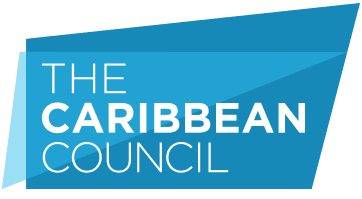07 April 2025
Cuba’s Minister of Energy and Mines, Vicente de la O Levy, has insisted that the recovery of Cuba’s National Electricity System (SEN) is “on schedule” and that a positive outcome of everything planned “will soon be seen.”
His comments come as extensive daily power outages continue because of fuel shortages, breakdowns, and scheduled repairs. On 6 April the deficit forecast by the state power generator Unión Eléctrica (UNE) reached 1,615 MW or 56% of forecast demand during peak evening hours.
In an extended interview published in four parts over several days in the official publication Granma, the Minister said that he expects Cuba to exceed its commitment to reach 24% of its electricity needs from renewable sources by 2030, and that the benefits of the extensive repairs and maintenance being carried out on the country’s eight aging thermoelectric plants (CTE) will soon be seen.
Less promisingly, he warned that other issues relating to fuel, financing, and falling national oil and gas production continue to affect the sector.
National fuel production, he said, is declining “to the point that analysts believe there would come a time when we wouldn’t even have [enough] fuel for the thermoelectric plants. We’re talking about domestic crude oil and accompanying gas to generate electricity,” he told the publication.
Observing that Cuba has always been dependent on fuel imports to power the country’s thermoelectric power plants, he stressed that more is spent on this than on food imports or on medicine, with more than half of all fuel imported used to generate electricity.
Electricity recovery, he said, was complicated, not just because of the technical condition of the thermoelectric plants, but because of the limited nature of the financing available.
To maintain power generation, if the electrical system were functioning properly, would require an annual investment of between US$250mn and US$350mn, he said. “If you don’t provide those resources for a year, you can’t recover them; and it hasn’t been just a year. That’s the price we’re paying. It hasn’t been possible; the country hasn’t had enough income,” he told Granma.
Highlights in this issue:
- Cuba and Russia stress the need to rapidly consolidate economic ties
- ZEDM companies authorised to use higher exchange rate to calculate salaries
- Taxation-derived fund helping restore Cuba’s public transport
- Head of Southern Command says Cuba a threat to US national security
- Vietnamese business encouraged to play a greater role in Cuban economy
Levy made clear that “the recovery” of Cuba’s electrical supply after having experienced four nationwide outages and months when much of the country has been without power for up to 20 hours a day, is about much more than the construction of new photovoltaic solar parks.
Such additions, he said, may be “the most notable or the most innovative, the most different,” but as they come on stream their introduction into the energy matrix is enabling Union Eléctrica to undertake the necessary repairs to the thermoelectric plants that provide most of Cuba’s power.
Speaking about national oil production in relation to power generation, he said that “drilling a well is an investment, but maintaining that well requires resources, which must be invested every day.” Financing shortages, he told viewers had forced the government “to keep closing wells, closing them again and again,” because, he said, they didn’t have the resources to keep them active.
In relation to power generation, he said, “the first thing is to halt this decline, while simultaneously reducing fuel consumption, expanding generating capacity and rapidly progressing plans for the use less expensive renewable energy sources.
The plan in relation to photovoltaic power, he explained, is for four photovoltaic parks to be delivering energy by the end of April, to alleviate the enormous deficit that persists. “This doesn’t mean that blackouts will be eliminated completely,“ Levy however admitted. It’s a gradual, costly, investment-intensive process for which we can see the light at the end of the tunnel, and which doesn’t end with these 1,000 MW.”
That is why he said, the Cuban government is promoting a plan to launch 100 solar parks by 2031 through two overlapping contracts that will add up to the 2,000 MW, one announced for 2028, and one being developed at a slower pace.
At the same time, he said, the Ministry is working on plans to significantly increase domestic oil production from the 138,028 tons recorded in 2024. Cuba currently produces about 40,000 barrels per oil a day, or about a third of the crude oil it consumes, according to the Ministry of Energy and Mines (MINEM).
During the interview, which sought to assure Cubans that a comprehensive integrated plan was being implemented by government to enable the gradual recovery of the SEN, Levy revealed:
- Block one of the Carlos Manuel de Céspedes Cienfuegos thermoelectric plant (CTE) is expected to be synchronised in April producing up to 158 MW and a second block will come online in June with a similar potential. The plant has undergone a major repair with some of the key elements manufactured overseas
- When more than 90% of the necessary resources are obtained, the Antonio Guiteras CTE in Matanzas, the country’s largest thermoelectric plant producing about 280MW, will be taken offline and long overdue repair work not undertaken since 2004 will take place over eight or ten months.
- Two units under construction at the Carlos Manuel de Céspedes plant in Cienfuegos will be reinstated to the SEN this month and the other in June.
- The second unit at the Felton CTE in Holguín, which was “completely lost” after a 2022 fire, is undergoing a comprehensive rehabilitation. The “gigantic engineering project” will last two years. The minister did not specify when it would be completed.
- Alongside these and other repair and maintenance projects involving the recovery of 850 MW, two Turkish floating power barges will be gradually phased in, requiring the importation of large quantities of fuel.
- Areas with new oil deposits have been identified at Boca de Jaruco, between Fraile and Jibacoa; the area of East Havana and Alamar; and south of the Puerto Escondido and Canasí fields.
- Batteries able to bring stability to the solar power system will be added as the installation of wind farms progresses.
During the extended interview the Minister stressed that everything planned is on schedule and a positive outcome is expected to emerge from the new strategy.
Granma, in what at times was an aggressively questioning interview, quoted Levy as saying that International specialists who had visited, had agreed in writing with Cuban proposals including its development strategy; the urgent need to increase domestic fuel production and reduce consumption by introducing renewable energy; additionally boosting distributed generation; and continuing to use thermoelectric plants, which it reported remain indispensable to the overall energy matrix as they use Cuban fuel “over which the country has control.”
24 March 2025, Issue 1274
The Caribbean Council is able to provide further detail about all of the stories in Cuba Briefing. If you would like a more detailed insight into any of the content of today’s issue, please get in touch.






